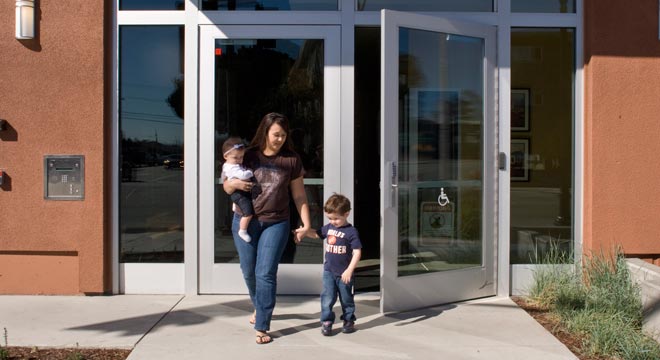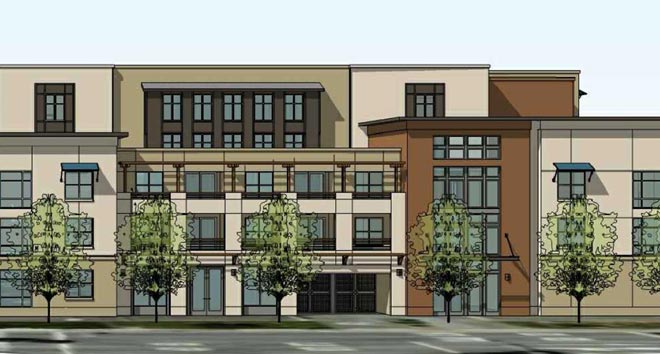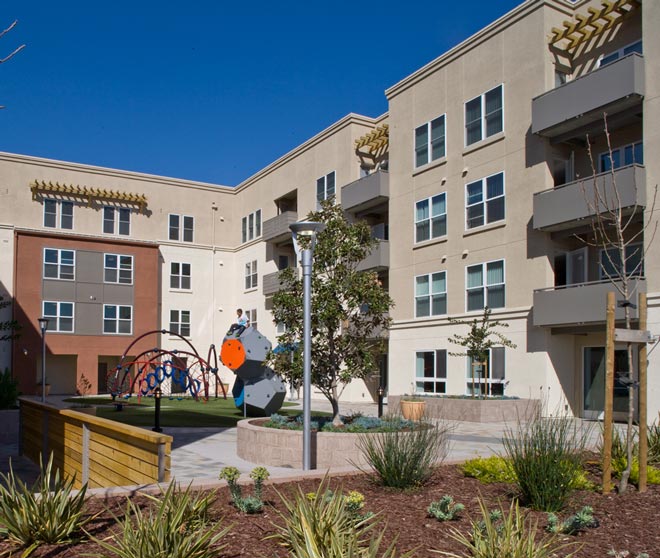
Andre Wiley, an Oakland school teacher who works two jobs to support his wife and young son, was hit with a 35 percent rent increase for a “no-frills” two-bedroom apartment. Now he’s contemplating moving to the Central Valley to find an apartment he can afford.
Martha Ortega, a San Mateo County resident, was forced out of her two-bedroom when the new owner raised her rent by 44%. She and her husband are now living in a one-bedroom apartment, and her husband is working two jobs to earn enough money to pay the bills.
Nicole Jones, a single mother and San Mateo resident, “felt lucky” to find a converted single-car garage for $1,000 a month.
Stories like these are in the news every day.
The cost of housing has become a staggering burden on working families in cities throughout the Bay Area. Tech workers and millennials are flocking to urban centers, but the production of new housing has been lagging for years. With demand outpacing supply, the cost of housing is rising faster than wages for working class families.
The shift is happening across the country, but working families in the Bay Area are among the hardest hit. San Francisco, where the average rent for a two-bedroom apartment is $4,580, has become the poster child for this phenomenon.
Cities in the Bay Area—having barely emerged from the effects of the Great Recession and the housing meltdown—are starting to build again, but development isn’t keeping up with the escalating demand. Not by a long-shot.
The population in San Francisco could increase by as much as 250,000 people in the next five years, but the city has only built 1,787 affordable housing units since 1992.
“We should be building that many on an annual basis,” said San Francisco’s Planning Director, John Rahaim.
San Francisco is a microcosm of a regional housing affordability crisis. As production of new housing units has failed to keep pace with the housing demand created by recent job growth, rents in places like San Mateo near jobs and transit have dramatically increased. For example
- Rents have risen 3.7 percent nationwide in the last year, but in San Jose, they rose 12.3 percent during the same period.
- In San Mateo—the city with the second-highest rents in the state—the average rent has gone up 16 percent in the last two years.
- Oakland rents have increased by 12 percent during the last year.
- There are other costs, too. As working class families get pushed further away from job centers the resulting sprawl and extremely long commutes carry enormous environmental and social costs.
Introducing 2000 Delaware
In the midst of this housing affordability crisis, Westlake Urban and our partner Palo Alto Partners are pleased to announce our latest development, 2000 Delaware, a newly constructed, multifamily rental property for moderate income households in San Mateo, CA. 2000 Delaware is a pedestrian-friendly, transit-oriented development with 60 contemporary two-bedroom units.

2000 Delaware is located within a short walk of Caltrain, SamTrans and local retail. The project offers a variety of amenities, including a washer and dryer in each unit, a fitness facility, a large community room, bike storage, covered parking and a landscaped courtyard with a children’s play area.
The project is targeted to “workforce” households. The rental rate for the 2 bedroom units is expected to be approximately $2,510 per month. By comparison, typical rents for similar new apartments in San Mateo are around $3,600 per month. To qualify to live at 2000 Delaware, a household’s gross annual income cannot exceed 120% of median income in the County of San Mateo ($98,900 for a two-person household). Priority will be given to public sector employees, including the City of San Mateo and employees of the San Mateo/Foster City School District.
2000 Delaware couldn’t come at a better time. Its Mid-Peninsula location is one of the Bay Area locations where affordable workforce rental housing is extremely scarce. San Mateo, like most cities in the Bay Area, needs quality, affordable housing for the teachers, police officers, fire fighters, nurses and city employees who protect us and keep us safe and make day-to-day life possible. Our communities simply couldn’t survive without them.
2000 Delaware provides 60 centrally-located, high quality, affordable apartments so working families can live close to their jobs and avoid long commutes. The project is the City of San Mateo’s largest workforce housing development to date.
Every unit makes a difference.
Projects like 2000 Delaware are unique and rare. Without the City of San Mateo’s vision and its commitment to housing affordability, this project could not have happened. Because of the City’s contribution of the land for the project (once the location of the City’s Police Department), Westlake Urban was able to make the financial commitment to make the project a reality. We are honored to work with the city, community leaders in San Mateo and our partner, Palo Alto Partners to make 2000 Delaware possible.

2000 Delaware is particularly unique, because it is part of a larger project—a 120 unit affordable housing community, which includes two separate buildings over a single garage podium. The north building, known as Delaware Pacific, includes 60 units for low-income households and was developed by MidPen Housing Corporation. Both 2000 Delaware and MidPen’s Delaware Pacific share common amenities.
And yet given the massive scope of the housing affordability crisis, the combined projects will barely make a dent. The Bay Area needs thousands of affordable or below-market housing developments like 2000 Delaware if we are to abate this crisis.
Sunset magazine published an article last month about four innovative housing developers who are reshaping Western cities. The article acknowledged that developers often have a reputation problem and are “rarely cast as the good guy.”
But while developers often take the blame for the changing the landscape and the disruption that ensues in the wake of a new development, there are examples of developers that do act in the community’s long-term interests. Westlake Urban strives to be the type of innovative, community focused developer described in the article.
Housing affordability will continue to be a challenge for Bay Area communities in light of the projected unprecedented employment and economic growth. The Bay Area’s economy is red hot, and it’s expected stay that way for the foreseeable future, bringing with it new households that desire to live close to where they work.
New housing production has to be part of the solution to the Bay Area’s housing affordability crisis. Developers working side-by-side with residents, community leaders, and elected officials at the local, state and national levels. We will all need to pitch in to “systematically attack the problem” while also looking for out-of-the box innovations to accelerate the process.
Yes, the scale of the problem is massive, but behind the numbers are people: people like Andre Wiley, Martha Ortega and Nicole Jones, who just want a quality, affordable, convenient place to live. For Andre, Martha, Nicole and their families, every housing unit makes a difference.
